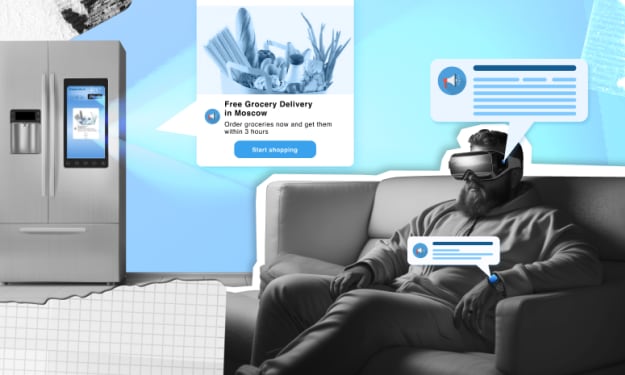Beyond the Click: Unmasking Dark Patterns and Championing Ethical Design in UI/UX
Empowering Transparency and Integrity: Navigating the Ethical Landscape of UI/UX Design Practices
In the intricate dance of digital design, where functionality meets aesthetics, UI/UX designers hold significant power. They guide user behavior, crafting pathways through the digital realm that are either enlightening or misleading.
This power, however, brings with it a weighty responsibility: the ethical considerations of design choices. Among these considerations, dark patterns represent a critical battleground. These deceptive design tactics, engineered to trick users into making decisions they wouldn't otherwise make, raise pressing questions about morality in design.
This exploration delves deep into the dark patterns, unraveling their impact on users and the ethical responsibilities of designers.
Unveiling Dark Patterns
Harry Brignull in 2010 coined the term "dark patterns", identifying UI/UX strategies that intentionally deceive users. These manipulative practices are not accidents but rather carefully crafted to benefit an organization at the user's expense. From disguised ads that blend seamlessly into content, to the convoluted pathways that make unsubscribing from a service a Herculean task, dark patterns are pervasive in our digital experiences.
The Many Faces of Dark Patterns
- Misdirection: Focusing user attention on one thing to distract from another.
- Forced Continuity: When free trials silently convert into paid subscriptions without explicit consent or reminder.
- Disguised Ads: Advertisements camouflaged within content, misleading users into clicking.
- Confirmshaming: Employing guilt to sway users towards or away from making certain choices.
Bait and Switch: Users set out to do one thing but are diverted to another action that benefits the business.
Each of these tactics exploits human psychology and the trust users place in digital interfaces, leading to a betrayal that can have far-reaching consequences.
Ethical Considerations and Implications
The use of dark patterns in UI/UX design raises profound ethical questions. At the heart of these considerations is the balance between business goals and user welfare. Ethical design respects user autonomy, providing clear, honest options without manipulation. In contrast, dark patterns prioritize conversion rates and profit margins over user experience and consent, leading to a breach of trust that can tarnish the brand reputation and user loyalty in the long run.
The Impact on Users and Society
The consequences of dark patterns extend beyond individual frustrations, contributing to a broader societal impact. They can lead to overconsumption, privacy violations, and financial loss, undermining the Internet's role as a space for empowerment and access to information. Furthermore, they exacerbate issues of digital literacy, as less tech-savvy users are more likely to fall prey to these deceptive practices.
Legal and Regulatory Perspectives
The increasing awareness and criticism of dark patterns have led to regulatory scrutiny. Laws and guidelines, such as the GDPR in Europe and the CCPA in California, have begun to address deceptive practices, pushing for greater transparency and user consent in digital interactions. These regulations signal a shifting landscape where ethical design is not just a moral choice but a legal requirement.

Strategies for Ethical Design
- Transparency: Be clear and open about the implications of user decisions, ensuring users have all the information they need.
- User Empowerment: Design choices should empower users, giving them control over their digital experiences.
- Respect for Privacy: Prioritize user privacy, offering straightforward options for users to control their data and digital footprint.
- Inclusive Design: Ensure that design decisions do not exploit vulnerable populations or perpetuate biases.
- Engage in Ethical Reflection: Regularly assess design practices through the lens of ethical considerations, challenging the team to prioritize user welfare.
Building Trust Through Ethical Design
The antidote to dark patterns is a commitment to ethical design practices that respect and value the user. This commitment not only enhances the user experience but also fosters trust, a precious commodity in the digital age. Trustworthy design practices contribute to building a positive brand reputation and long-term user relationships.
Click here if you're someone who's looking for an article for case study design examples
The Role of Designers and Organizations
UI/UX designers, armed with an understanding of human psychology and the impact of their work, are on the front lines of ethical decision-making in digital design. It is imperative for designers to advocate for user-centered practices within their organizations, pushing back against the short-term gains promised by dark patterns in favor of long-term ethical sustainability. Organizations, for their part, must recognize the value of ethical design in building lasting relationships with their users, integrating ethical considerations into their core business strategies.
In the vast digital landscape, where users navigate through millions of interfaces, the ethical implications of design decisions are profound. Dark patterns stand as a stark reminder of the potential for manipulation within these digital spaces. However, they also offer a clarion call to action for designers and organizations alike—a call to elevate ethical considerations, respect user autonomy, and embrace transparency.
About the Creator
steve mathews
A passsionate UI/UX designer. I'll be posting more about the UI/UX trends and the updates happeing in the UI/UX world.







Comments
There are no comments for this story
Be the first to respond and start the conversation.